The story:
1/14 (Results=10-14)
When I started my PhD in the . @FinlayLab, . @sshames83 taught me about EspZ: a protein that EPEC& #EHEC/ #STEC inject through their #T3SS into our intestinal cells. https://abs.twimg.com/emoji/v2/... draggable="false" alt="😯" title="Schweigendes Gesicht" aria-label="Emoji: Schweigendes Gesicht">This bacterial protein travels to our mitochondria &delays cell death from infection!
https://abs.twimg.com/emoji/v2/... draggable="false" alt="😯" title="Schweigendes Gesicht" aria-label="Emoji: Schweigendes Gesicht">This bacterial protein travels to our mitochondria &delays cell death from infection! https://abs.twimg.com/emoji/v2/... draggable="false" alt="☠️" title="Totenkopf" aria-label="Emoji: Totenkopf">
https://abs.twimg.com/emoji/v2/... draggable="false" alt="☠️" title="Totenkopf" aria-label="Emoji: Totenkopf">
2/
 https://abs.twimg.com/emoji/v2/... draggable="false" alt="📚" title="Bücher" aria-label="Emoji: Bücher"> https://iai.asm.org/content/79/12/4784.long">https://iai.asm.org/content/7...
https://abs.twimg.com/emoji/v2/... draggable="false" alt="📚" title="Bücher" aria-label="Emoji: Bücher"> https://iai.asm.org/content/79/12/4784.long">https://iai.asm.org/content/7...
2/
It& #39;s fascinating & counter-intuitive that some bacterial virulence factors actually PROTECT the human cell during disease caused by the same infection https://abs.twimg.com/emoji/v2/... draggable="false" alt="🤔" title="Denkendes Gesicht" aria-label="Emoji: Denkendes Gesicht">& involves the neat idea of virulence factor interplay.
https://abs.twimg.com/emoji/v2/... draggable="false" alt="🤔" title="Denkendes Gesicht" aria-label="Emoji: Denkendes Gesicht">& involves the neat idea of virulence factor interplay.
3/
 https://abs.twimg.com/emoji/v2/... draggable="false" alt="📚" title="Bücher" aria-label="Emoji: Bücher"> https://journals.plos.org/plospathogens/article?id=10.1371/journal.ppat.1001057
https://abs.twimg.com/emoji/v2/... draggable="false" alt="📚" title="Bücher" aria-label="Emoji: Bücher"> https://journals.plos.org/plospathogens/article?id=10.1371/journal.ppat.1001057
https://journals.plos.org/plospatho... class="Emoji" style="height:16px;" src=" https://abs.twimg.com/emoji/v2/... draggable="false" alt="📚" title="Bücher" aria-label="Emoji: Bücher"> https://www.sciencedirect.com/science/article/abs/pii/S0966842X1200039X?via%3Dihub">https://www.sciencedirect.com/science/a...
3/
I was intrigued by how EPEC injects its virulence factors into human cells, with some going to mitochondria.
While #mitochondria are more commonly thought of as the https://abs.twimg.com/emoji/v2/... draggable="false" alt="💪" title="Angespannter Bizeps" aria-label="Emoji: Angespannter Bizeps">of the cell, they actually play a hugely important role in host cell death/survival pathways.
https://abs.twimg.com/emoji/v2/... draggable="false" alt="💪" title="Angespannter Bizeps" aria-label="Emoji: Angespannter Bizeps">of the cell, they actually play a hugely important role in host cell death/survival pathways.
4/
While #mitochondria are more commonly thought of as the
4/
So when EPEC infects our intestinal cells and sends virulence factors like EspZ to mitochondria, they& #39;re in the right spot to influence human cell death https://abs.twimg.com/emoji/v2/... draggable="false" alt="☠️" title="Totenkopf" aria-label="Emoji: Totenkopf">, e.g. apoptosis.
https://abs.twimg.com/emoji/v2/... draggable="false" alt="☠️" title="Totenkopf" aria-label="Emoji: Totenkopf">, e.g. apoptosis.
5/
5/
So I wanted to focus on what was happening in mitochondria during infection!
To do that, I knew I needed to study proteases, which play essential roles in mitochondrial function, the human immune response, AND in bacterial pathogenesis.
6/
 https://abs.twimg.com/emoji/v2/... draggable="false" alt="📚" title="Bücher" aria-label="Emoji: Bücher">Our review: https://www.mcponline.org/content/16/4_suppl_1/S161.long">https://www.mcponline.org/content/1...
https://abs.twimg.com/emoji/v2/... draggable="false" alt="📚" title="Bücher" aria-label="Emoji: Bücher">Our review: https://www.mcponline.org/content/16/4_suppl_1/S161.long">https://www.mcponline.org/content/1...
To do that, I knew I needed to study proteases, which play essential roles in mitochondrial function, the human immune response, AND in bacterial pathogenesis.
6/
Fortunately, we collaborated with protease & mass spec magicians. @OverallLabNews, where I had the immense pleasure of learning from the whole team, particularly Drs. Overall & Theo Klein, who introduced the elegant biochem of TAILS terminal #proteomics.
 https://abs.twimg.com/emoji/v2/... draggable="false" alt="📚" title="Bücher" aria-label="Emoji: Bücher"> https://www.nature.com/articles/nbt.1611">https://www.nature.com/articles/...
https://abs.twimg.com/emoji/v2/... draggable="false" alt="📚" title="Bücher" aria-label="Emoji: Bücher"> https://www.nature.com/articles/nbt.1611">https://www.nature.com/articles/...
To study mitochondria during apoptosis https://abs.twimg.com/emoji/v2/... draggable="false" alt="☠️" title="Totenkopf" aria-label="Emoji: Totenkopf">, we had to overcome some technical& biological challenges, so we applied TAILS to create an organelle-modified approach we called mitochondrial SILAC TAILS (MS-TAILS) and showed it worked to study mitochondria:
https://abs.twimg.com/emoji/v2/... draggable="false" alt="☠️" title="Totenkopf" aria-label="Emoji: Totenkopf">, we had to overcome some technical& biological challenges, so we applied TAILS to create an organelle-modified approach we called mitochondrial SILAC TAILS (MS-TAILS) and showed it worked to study mitochondria:
8/
 https://abs.twimg.com/emoji/v2/... draggable="false" alt="📚" title="Bücher" aria-label="Emoji: Bücher"> https://pubs.acs.org/doi/10.1021/acs.jproteome.8b00675">https://pubs.acs.org/doi/10.10...
https://abs.twimg.com/emoji/v2/... draggable="false" alt="📚" title="Bücher" aria-label="Emoji: Bücher"> https://pubs.acs.org/doi/10.1021/acs.jproteome.8b00675">https://pubs.acs.org/doi/10.10...
8/
After years working w mitochondria & proteomics, I finally got to apply this work back to my core passion: microbiology (small but mighty https://abs.twimg.com/emoji/v2/... draggable="false" alt="💪" title="Angespannter Bizeps" aria-label="Emoji: Angespannter Bizeps">
https://abs.twimg.com/emoji/v2/... draggable="false" alt="💪" title="Angespannter Bizeps" aria-label="Emoji: Angespannter Bizeps"> https://abs.twimg.com/emoji/v2/... draggable="false" alt="🦠" title="Microbe" aria-label="Emoji: Microbe"> #EPECisEPIC)!
https://abs.twimg.com/emoji/v2/... draggable="false" alt="🦠" title="Microbe" aria-label="Emoji: Microbe"> #EPECisEPIC)!
9/
 https://abs.twimg.com/emoji/v2/... draggable="false" alt="📚" title="Bücher" aria-label="Emoji: Bücher"> https://msystems.asm.org/content/5/3/e00283-20">https://msystems.asm.org/content/5...
https://abs.twimg.com/emoji/v2/... draggable="false" alt="📚" title="Bücher" aria-label="Emoji: Bücher"> https://msystems.asm.org/content/5/3/e00283-20">https://msystems.asm.org/content/5...
9/
We applied this new approach to study how EPEC infection & its T3SS modify human mitochondria in an in vitro (cell culture) model of EPEC infection:
10/
 https://abs.twimg.com/emoji/v2/... draggable="false" alt="📚" title="Bücher" aria-label="Emoji: Bücher"> https://msystems.asm.org/content/5/3/e00283-20">https://msystems.asm.org/content/5...
https://abs.twimg.com/emoji/v2/... draggable="false" alt="📚" title="Bücher" aria-label="Emoji: Bücher"> https://msystems.asm.org/content/5/3/e00283-20">https://msystems.asm.org/content/5...
10/
We found MANY differences across the entire human cell, including several changes in mitochondrial proteins (shown in red). Some were specifically mediated by the presence vs. absence of the T3SS (green). Some had not previously been observed (*).
11/
 https://abs.twimg.com/emoji/v2/... draggable="false" alt="📚" title="Bücher" aria-label="Emoji: Bücher"> https://msystems.asm.org/content/5/3/e00283-20">https://msystems.asm.org/content/5...
https://abs.twimg.com/emoji/v2/... draggable="false" alt="📚" title="Bücher" aria-label="Emoji: Bücher"> https://msystems.asm.org/content/5/3/e00283-20">https://msystems.asm.org/content/5...
11/
We were most interested in changes that had NOT been observed in our 1st study (apoptosis with NO infection). These are most likely to represent direct/indirect mechanisms of T3SS virulence factors (like EspZ!).
12/
 https://abs.twimg.com/emoji/v2/... draggable="false" alt="📚" title="Bücher" aria-label="Emoji: Bücher"> https://msystems.asm.org/content/5/3/e00283-20
https://abs.twimg.com/emoji/v2/... draggable="false" alt="📚" title="Bücher" aria-label="Emoji: Bücher"> https://msystems.asm.org/content/5/3/e00283-20
https://msystems.asm.org/content/5... class="Emoji" style="height:16px;" src=" https://abs.twimg.com/emoji/v2/... draggable="false" alt="📚" title="Bücher" aria-label="Emoji: Bücher"> https://pubs.acs.org/doi/10.1021/acs.jproteome.8b00675">https://pubs.acs.org/doi/10.10...
12/
Ultimately, by building these networks that show how human & pathogens proteins interact, we can identify how pathogens like EPEC subvert our defenses & kill our cells. https://abs.twimg.com/emoji/v2/... draggable="false" alt="☠️" title="Totenkopf" aria-label="Emoji: Totenkopf">
https://abs.twimg.com/emoji/v2/... draggable="false" alt="☠️" title="Totenkopf" aria-label="Emoji: Totenkopf">
This understanding can help us understand how best to tackle these infections https://abs.twimg.com/emoji/v2/... draggable="false" alt="💪" title="Angespannter Bizeps" aria-label="Emoji: Angespannter Bizeps">& limit human disease.
https://abs.twimg.com/emoji/v2/... draggable="false" alt="💪" title="Angespannter Bizeps" aria-label="Emoji: Angespannter Bizeps">& limit human disease.
13/
This understanding can help us understand how best to tackle these infections
13/
Hope you enjoyed our work! I couldn& #39;t be more grateful for the team that made this happen! https://abs.twimg.com/emoji/v2/... draggable="false" alt="🙏" title="Folded hands" aria-label="Emoji: Folded hands">
https://abs.twimg.com/emoji/v2/... draggable="false" alt="🙏" title="Folded hands" aria-label="Emoji: Folded hands">
. @FinlayLab, . @OverallLabNews, &. @lenjf invested in & supported this research (and me) for years.
. @DocThejoe and Dr. Theo Klein were dedicated researchers here.
& the ENTIRE FinlayLab!
. @FinlayLab, . @OverallLabNews, &. @lenjf invested in & supported this research (and me) for years.
. @DocThejoe and Dr. Theo Klein were dedicated researchers here.
& the ENTIRE FinlayLab!

 Read on Twitter
Read on Twitter of the cell, they actually play a hugely important role in host cell death/survival pathways. 4/" title="I was intrigued by how EPEC injects its virulence factors into human cells, with some going to mitochondria. While #mitochondria are more commonly thought of as thehttps://abs.twimg.com/emoji/v2/... draggable="false" alt="💪" title="Angespannter Bizeps" aria-label="Emoji: Angespannter Bizeps">of the cell, they actually play a hugely important role in host cell death/survival pathways. 4/" class="img-responsive" style="max-width:100%;"/>
of the cell, they actually play a hugely important role in host cell death/survival pathways. 4/" title="I was intrigued by how EPEC injects its virulence factors into human cells, with some going to mitochondria. While #mitochondria are more commonly thought of as thehttps://abs.twimg.com/emoji/v2/... draggable="false" alt="💪" title="Angespannter Bizeps" aria-label="Emoji: Angespannter Bizeps">of the cell, they actually play a hugely important role in host cell death/survival pathways. 4/" class="img-responsive" style="max-width:100%;"/>
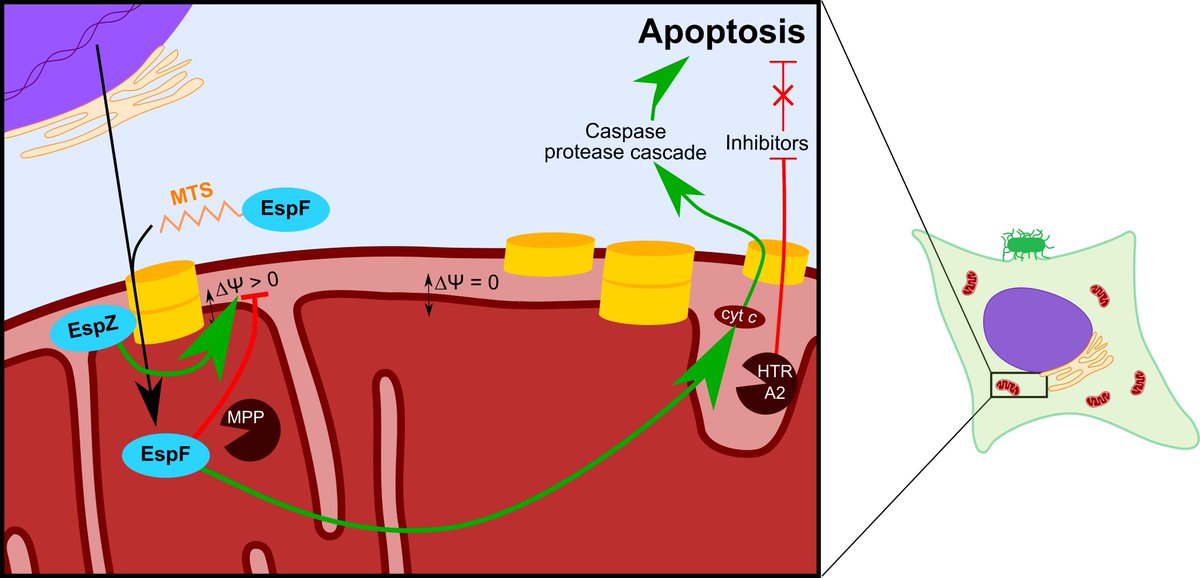 , e.g. apoptosis. 5/" title="So when EPEC infects our intestinal cells and sends virulence factors like EspZ to mitochondria, they& #39;re in the right spot to influence human cell deathhttps://abs.twimg.com/emoji/v2/... draggable="false" alt="☠️" title="Totenkopf" aria-label="Emoji: Totenkopf">, e.g. apoptosis. 5/" class="img-responsive" style="max-width:100%;"/>
, e.g. apoptosis. 5/" title="So when EPEC infects our intestinal cells and sends virulence factors like EspZ to mitochondria, they& #39;re in the right spot to influence human cell deathhttps://abs.twimg.com/emoji/v2/... draggable="false" alt="☠️" title="Totenkopf" aria-label="Emoji: Totenkopf">, e.g. apoptosis. 5/" class="img-responsive" style="max-width:100%;"/>
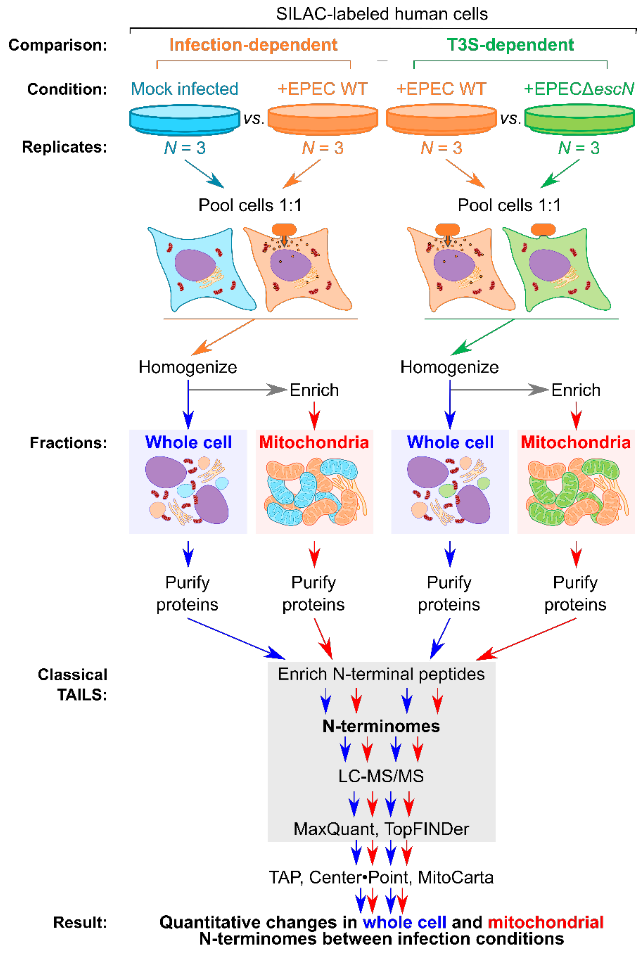 https://msystems.asm.org/content/5..." title="We applied this new approach to study how EPEC infection & its T3SS modify human mitochondria in an in vitro (cell culture) model of EPEC infection:10/https://abs.twimg.com/emoji/v2/... draggable="false" alt="📚" title="Bücher" aria-label="Emoji: Bücher"> https://msystems.asm.org/content/5..." class="img-responsive" style="max-width:100%;"/>
https://msystems.asm.org/content/5..." title="We applied this new approach to study how EPEC infection & its T3SS modify human mitochondria in an in vitro (cell culture) model of EPEC infection:10/https://abs.twimg.com/emoji/v2/... draggable="false" alt="📚" title="Bücher" aria-label="Emoji: Bücher"> https://msystems.asm.org/content/5..." class="img-responsive" style="max-width:100%;"/>
 https://msystems.asm.org/content/5..." title="We found MANY differences across the entire human cell, including several changes in mitochondrial proteins (shown in red). Some were specifically mediated by the presence vs. absence of the T3SS (green). Some had not previously been observed (*).11/https://abs.twimg.com/emoji/v2/... draggable="false" alt="📚" title="Bücher" aria-label="Emoji: Bücher"> https://msystems.asm.org/content/5...">
https://msystems.asm.org/content/5..." title="We found MANY differences across the entire human cell, including several changes in mitochondrial proteins (shown in red). Some were specifically mediated by the presence vs. absence of the T3SS (green). Some had not previously been observed (*).11/https://abs.twimg.com/emoji/v2/... draggable="false" alt="📚" title="Bücher" aria-label="Emoji: Bücher"> https://msystems.asm.org/content/5...">
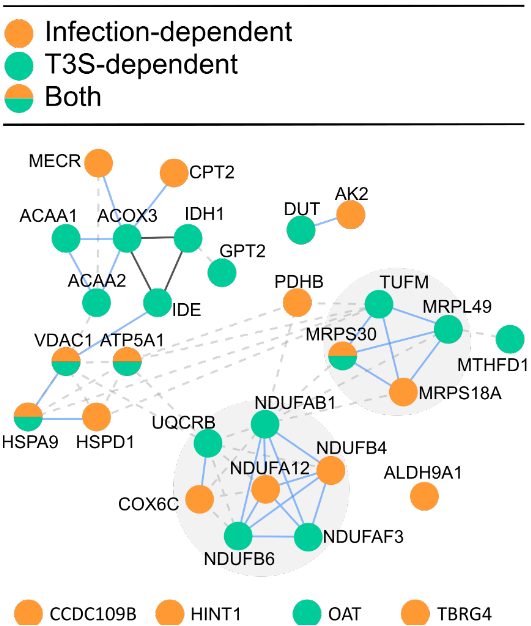 https://msystems.asm.org/content/5..." title="We found MANY differences across the entire human cell, including several changes in mitochondrial proteins (shown in red). Some were specifically mediated by the presence vs. absence of the T3SS (green). Some had not previously been observed (*).11/https://abs.twimg.com/emoji/v2/... draggable="false" alt="📚" title="Bücher" aria-label="Emoji: Bücher"> https://msystems.asm.org/content/5...">
https://msystems.asm.org/content/5..." title="We found MANY differences across the entire human cell, including several changes in mitochondrial proteins (shown in red). Some were specifically mediated by the presence vs. absence of the T3SS (green). Some had not previously been observed (*).11/https://abs.twimg.com/emoji/v2/... draggable="false" alt="📚" title="Bücher" aria-label="Emoji: Bücher"> https://msystems.asm.org/content/5...">
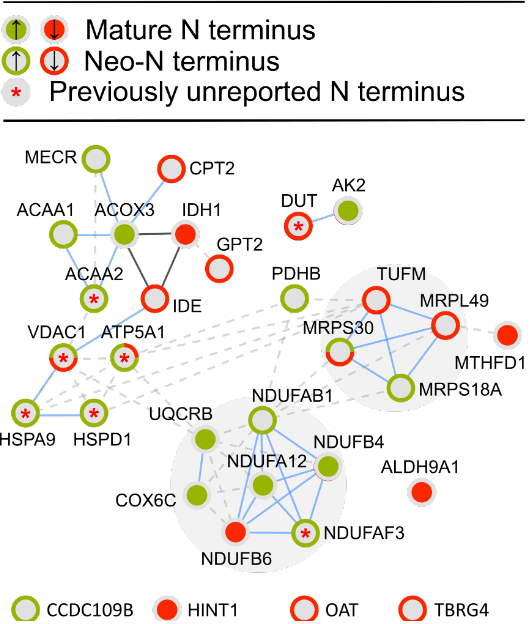 https://msystems.asm.org/content/5..." title="We found MANY differences across the entire human cell, including several changes in mitochondrial proteins (shown in red). Some were specifically mediated by the presence vs. absence of the T3SS (green). Some had not previously been observed (*).11/https://abs.twimg.com/emoji/v2/... draggable="false" alt="📚" title="Bücher" aria-label="Emoji: Bücher"> https://msystems.asm.org/content/5...">
https://msystems.asm.org/content/5..." title="We found MANY differences across the entire human cell, including several changes in mitochondrial proteins (shown in red). Some were specifically mediated by the presence vs. absence of the T3SS (green). Some had not previously been observed (*).11/https://abs.twimg.com/emoji/v2/... draggable="false" alt="📚" title="Bücher" aria-label="Emoji: Bücher"> https://msystems.asm.org/content/5...">
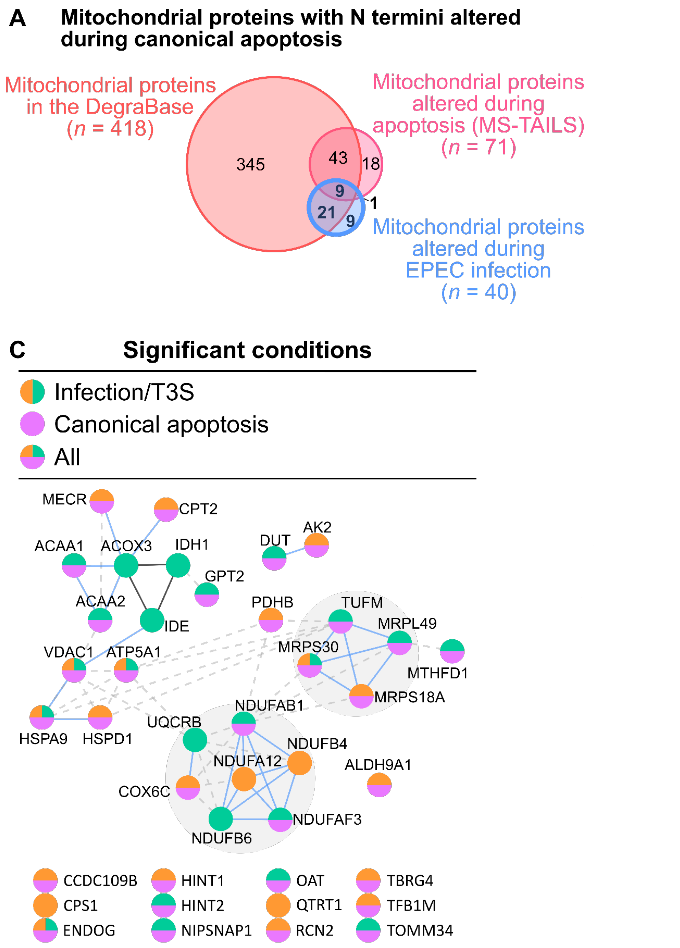 https://msystems.asm.org/content/5... class="Emoji" style="height:16px;" src=" " title="We were most interested in changes that had NOT been observed in our 1st study (apoptosis with NO infection). These are most likely to represent direct/indirect mechanisms of T3SS virulence factors (like EspZ!). 12/https://abs.twimg.com/emoji/v2/... draggable="false" alt="📚" title="Bücher" aria-label="Emoji: Bücher"> https://msystems.asm.org/content/5... class="Emoji" style="height:16px;" src=" ">
https://msystems.asm.org/content/5... class="Emoji" style="height:16px;" src=" " title="We were most interested in changes that had NOT been observed in our 1st study (apoptosis with NO infection). These are most likely to represent direct/indirect mechanisms of T3SS virulence factors (like EspZ!). 12/https://abs.twimg.com/emoji/v2/... draggable="false" alt="📚" title="Bücher" aria-label="Emoji: Bücher"> https://msystems.asm.org/content/5... class="Emoji" style="height:16px;" src=" ">
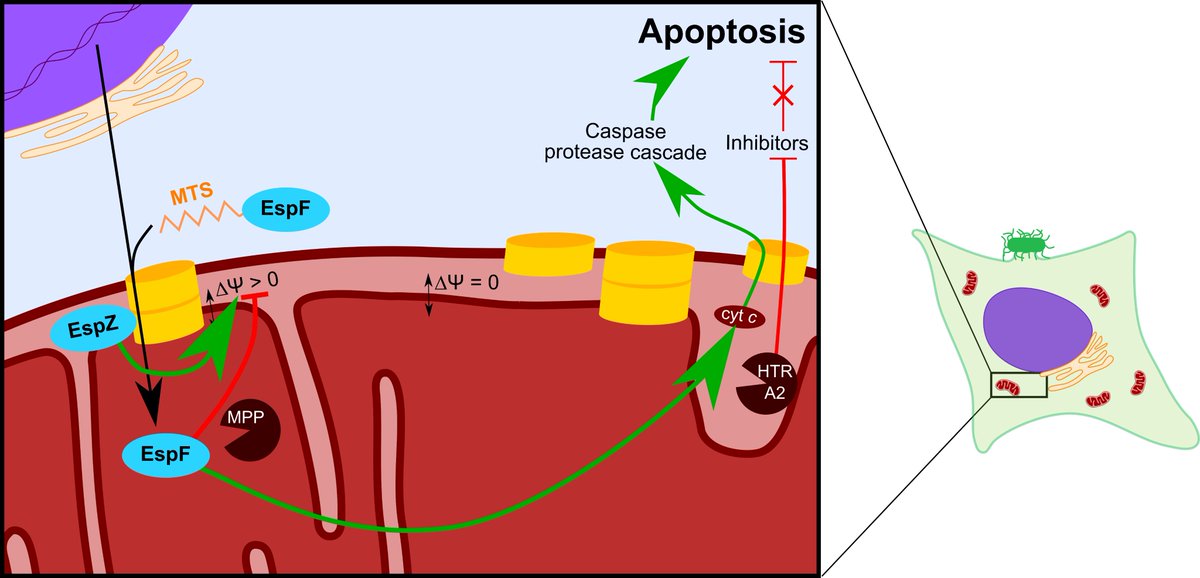 https://msystems.asm.org/content/5... class="Emoji" style="height:16px;" src=" " title="We were most interested in changes that had NOT been observed in our 1st study (apoptosis with NO infection). These are most likely to represent direct/indirect mechanisms of T3SS virulence factors (like EspZ!). 12/https://abs.twimg.com/emoji/v2/... draggable="false" alt="📚" title="Bücher" aria-label="Emoji: Bücher"> https://msystems.asm.org/content/5... class="Emoji" style="height:16px;" src=" ">
https://msystems.asm.org/content/5... class="Emoji" style="height:16px;" src=" " title="We were most interested in changes that had NOT been observed in our 1st study (apoptosis with NO infection). These are most likely to represent direct/indirect mechanisms of T3SS virulence factors (like EspZ!). 12/https://abs.twimg.com/emoji/v2/... draggable="false" alt="📚" title="Bücher" aria-label="Emoji: Bücher"> https://msystems.asm.org/content/5... class="Emoji" style="height:16px;" src=" ">


